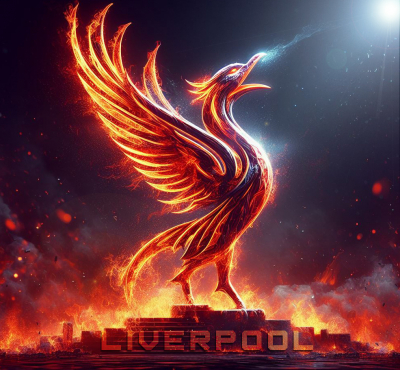Football News: The Van Gaal Philosophy Revealed (No, Really!)
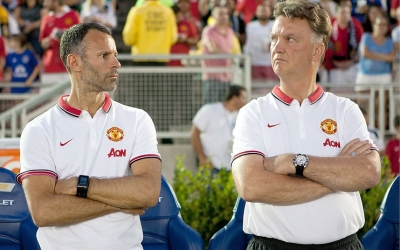
Image from:
Dominating football is something that only presents itself to few managers; football like all other aspects of life comes and goes in cycles. Ajax could have possibly gone on to dominate world football much like Barcelona in recent years if they were able to retain their world class playing staff, but more importantly their world class coaching staff. Regardless of this though it is clear that the Ajax team assembled by Louis Van Gaal is strongly considered one of the best teams ever to play the game.
Real Madrid's Jorge Valdano once said that Ajax are "the beauty and the beast" in an interview in which he also comments as follows "Ajax are not just a team of the 90's, they are approaching football utopia. Their concept of the game is exquisite yet they have a physical superiority as well" - A statement made in admiration of this great side.
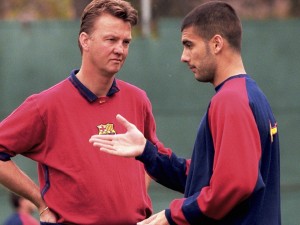
Bayern's gaffer and former Barcelona legend Pep Guardiola also had this to say on Van Gaal & Ajax "Few teams, among all I have seen play, have seduced me than that of Ajax under Van Gaal. The ease of creating the game behind the fast side of players and the way they pass the ball to the feet through the spaces. This Ajax could solve completely fantastically all "one-against-one" that can exist in a game. In both attack and defence. They assume the risk that a team can take. This was something that surprised me, which astonished me. Positional discipline: Possession of the ball as the basic idea, the game in constant support. Movements... And they did it all as simple as a sublime way. They were able to do perfectly is what I believe that a football team must always do. Van Gaal's Ajax gave football lessons to those who were familiar with the game."
During the 70's under Dutch legend Johann Cruyff Ajax dominated Europe with 3 successive wins and of course, they dominated the domestic competition also. In the 10+ years that followed Ajax fail to replicate that success and couldn't translate that continued domestic success into European wins. That was until Ajax signed a man who congratulated Ajax on "...signing the best coach in the world..." A man we all now know as the drunk speaking, trophy seeking, one of a kind, the Dutch mastermind, Louis Van Gaal.
During his tenure, as is much documented Louis Van Gaal assembled a squad with just an average age of 23, more than their age he assembled a squad that didn't know how to lose and in 1994/1995 Ajax did not lose domestically in any competition and they did not lose in Europe, Ajax and Louis Van Gaal was invincible in the Champions League and in the Eredivise.
Ladies and Gentlemen, Boys and Girls, Louis Van Gaal had arrived.
"We are the best! We are the BEST! And not just of Amsterdam. But also of Rotterdam. And Eindhoven. And Europe. And now we are the best of the.... WORLD!"
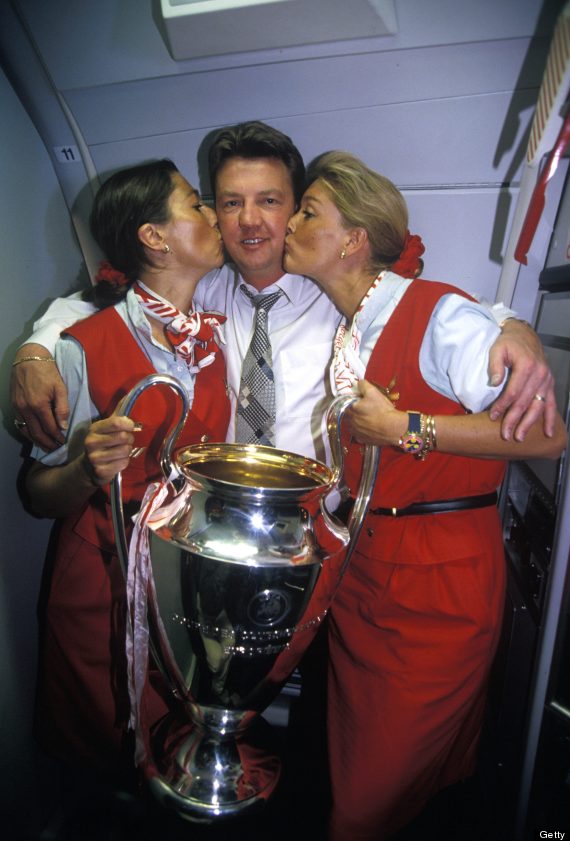
Philosophy & process - two words everyone is sick of hearing, but make no mistake a belief and a method is exactly what Louis Van Gaal produces day in day out as a manager.
A managerial system that intelligent players are fascinated by, a system that teaches and endorses attacking processes, technical progressions, tactical genius & defensive perfection, In an interview with FIFA.com during a popular coaching series Van Gaal was asked to explain his philosophy to the world, what he said revolutionized the way aspiring coaches looked at the game.
"It's a footballing philosophy more than a system. A system depends on the players you have. I played 4-3-3 with Ajax, 2-3-2-3 with Barcelona and I can play 4-4-2 with AZ. I'm flexible. The philosophy stays the same though. I don't think that you can adapt it to every possible situation. Preparing your tactical formation is essential. Each player needs to know where he has to be, and that is why there needs to be mutual understanding because you need absolute discipline. This is a sport played by 22 men, and there are 11 opponents out there playing as a team. Each individual needs to know who he has to beat and be there to support his team-mates."
In American Football there is a popular belief that by executing your individual role you help the team progress. If all 11 men on the field do their job correctly then the game will flow, "in the moment" you are an individual, but it is that individualism which makes you responsible for your team; If you do not execute your responsibility then your team mates will suffer.
This is the case with Van Gaal, the formation is irrelevant, we understand that the formation can be adapted depending on the opponent, your philosophy is one. In order to be successful your players need to execute their roles and dominate their opposing number and duties.
If we look at 2 of the greatest managers in the Premier League era;
Arsene Wenger - A formidable manager however his formational belief and tactical belief are one and the same and he cannot adjustment his teams responsibilities to his opponents resulting in far less success than he himself is capable of.
Jose Mourinho - His tactical belief stems from strength at the back, his formational belief is to strengthen his tactical belief and he will set up with 4, 5 or 10 at the back in order to reinforce defeat his opponents.
The most successful of managers understand the difference between a formational belief (which can be adapted dependent on your opponents) and a tactical belief (which is the DNA of how a team will play).
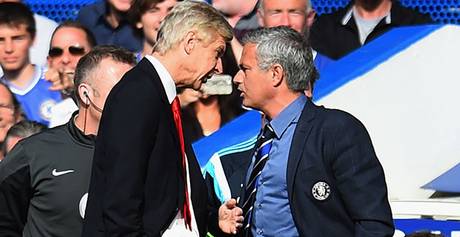
A lot of Van Gaal's successes come from dividing the game into 4 stages or aspects.
1) The Defensive Organization - The teams general shape and player positioning when the opponents are in possession.
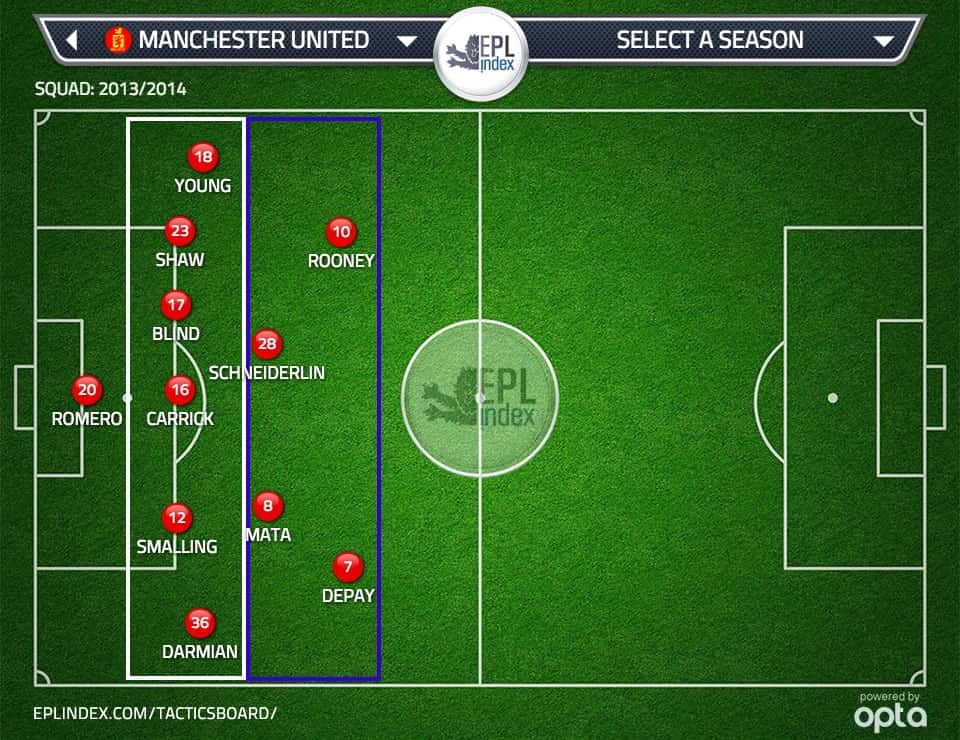
2) Defensive Transitions - How the team react and move immediately after losing possession (How do they press, etc.)
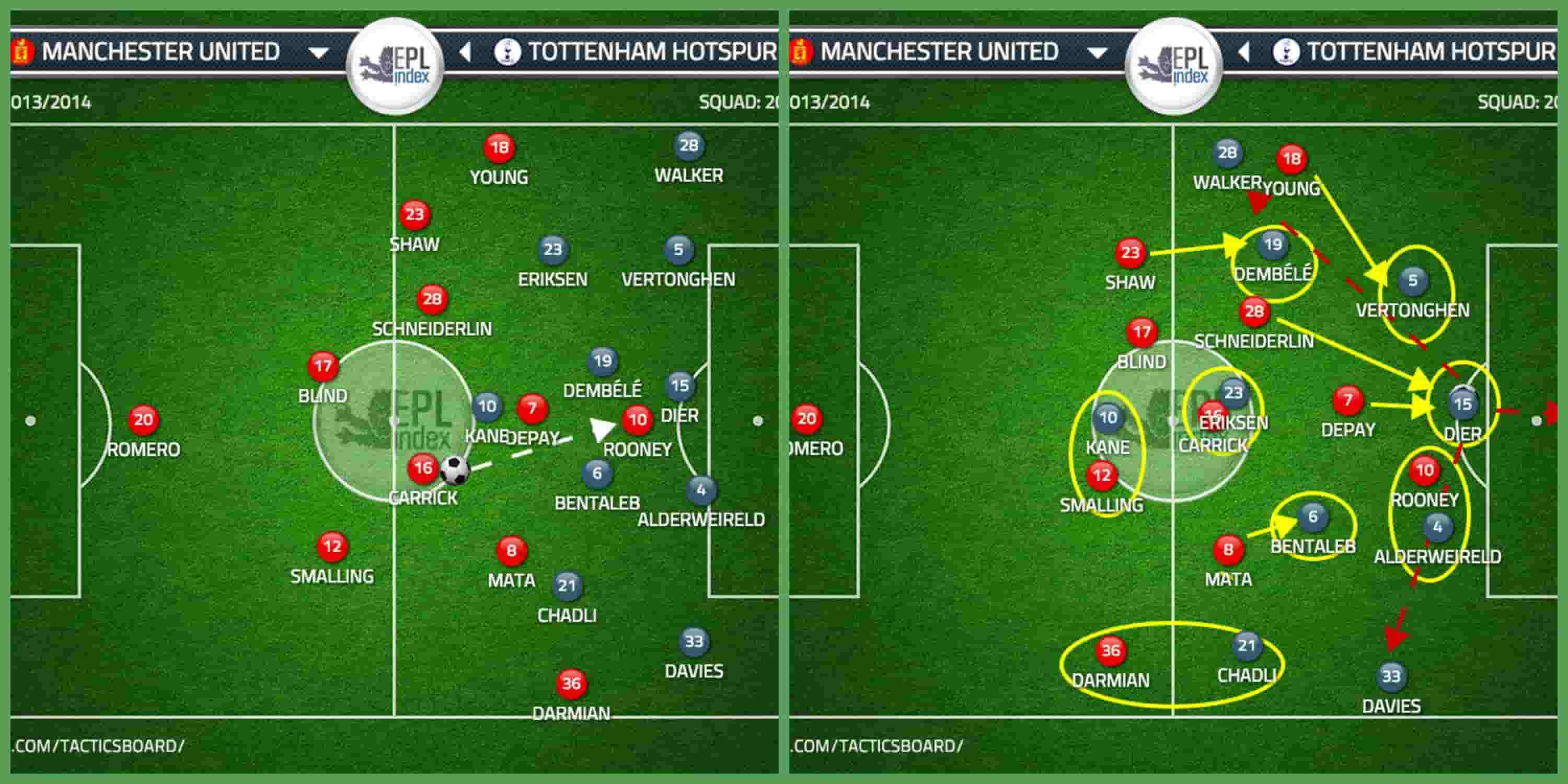
3) The Offensive Organization - The shape, movement, positioning and runs when the team has possession and are beginning an attacking phase of the game.
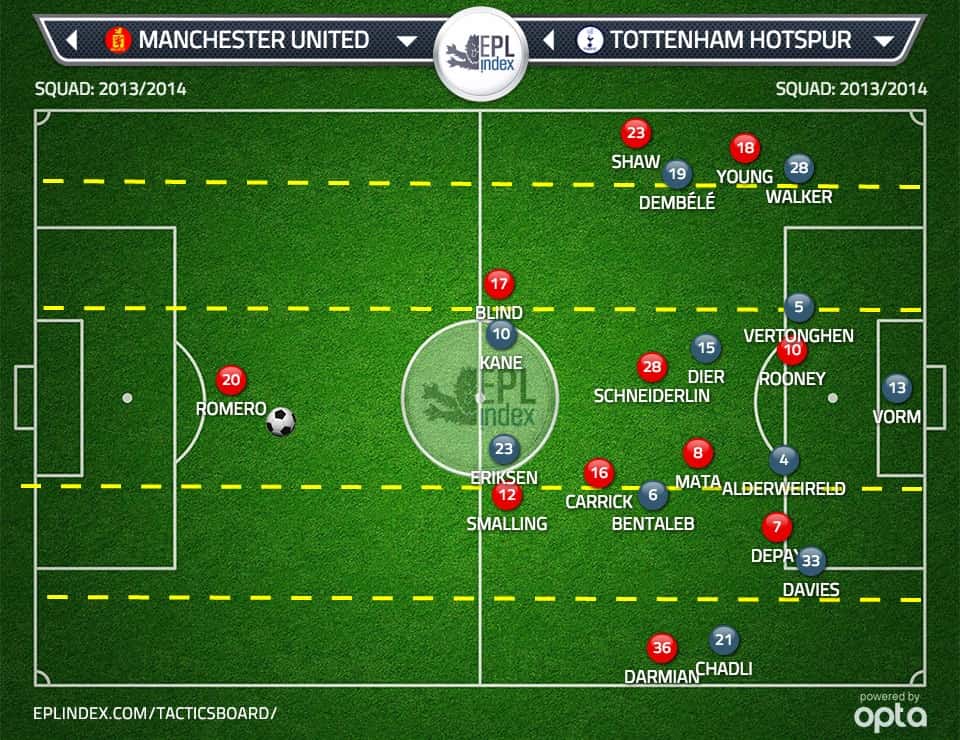
4) Offensive Transition - How the ball is moved from defence to attack, slow possession, quick counter attack, etc. what are the player movements like
Deconstructed further, the offensive transitions is broken down into a further 4 sections.
Construction phase - The construction phase is how the team first build their attacking move, for Van Gaal it starts with the goalkeeper (hence the vast amount of back passes seen at Manchester United over the past 12 months) the Keeper must start the move.
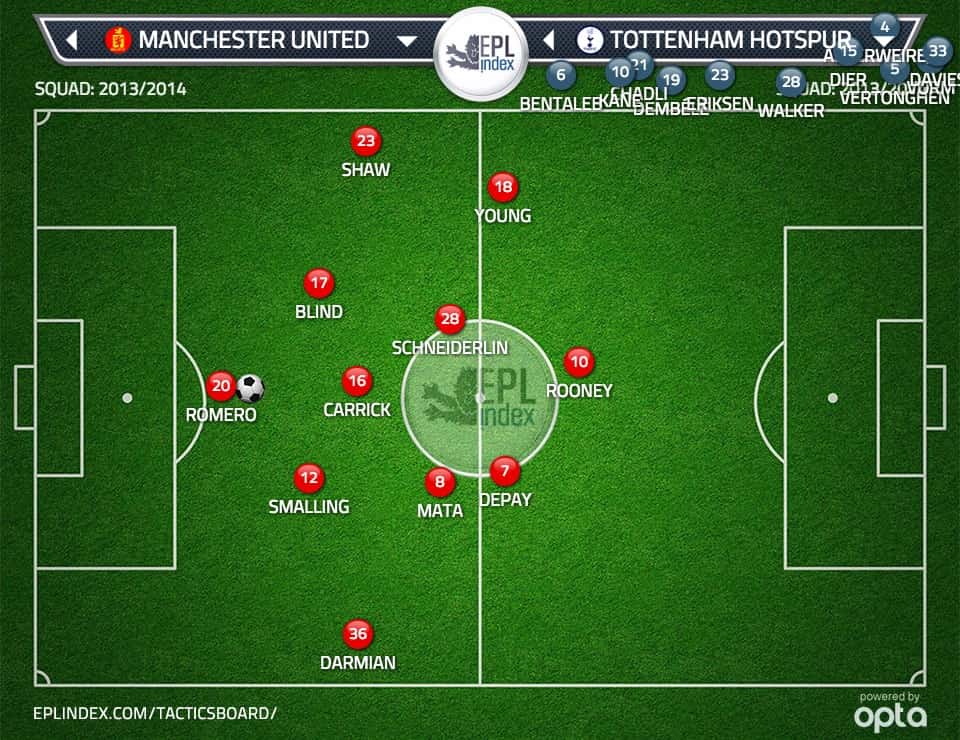
Movement and Circulation phase - for Van Gaal this revolves around ball retention and short concise passes between the midfield, wide players and defenders. Specifically looking for players in the half spaces.
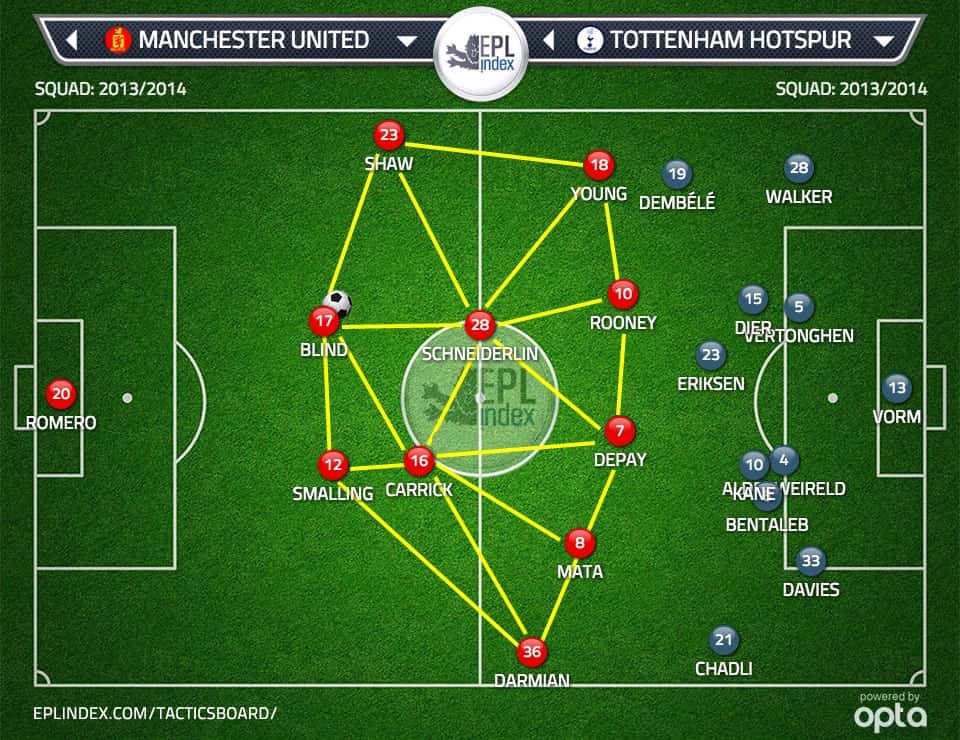
Chance Creation phase - Much like the previous phase this centres around the movement of the forward players and the hold up ability of the striker. Van Gaal operates in the half spaces, which is explained below. Due to the striker needing to be strong, quick, technical and of course possess finishing ability traditional methods such as through balls, passing into space, etc. are used less and instead Van Gaal prefers the 1-up, 1-down system (explained below).
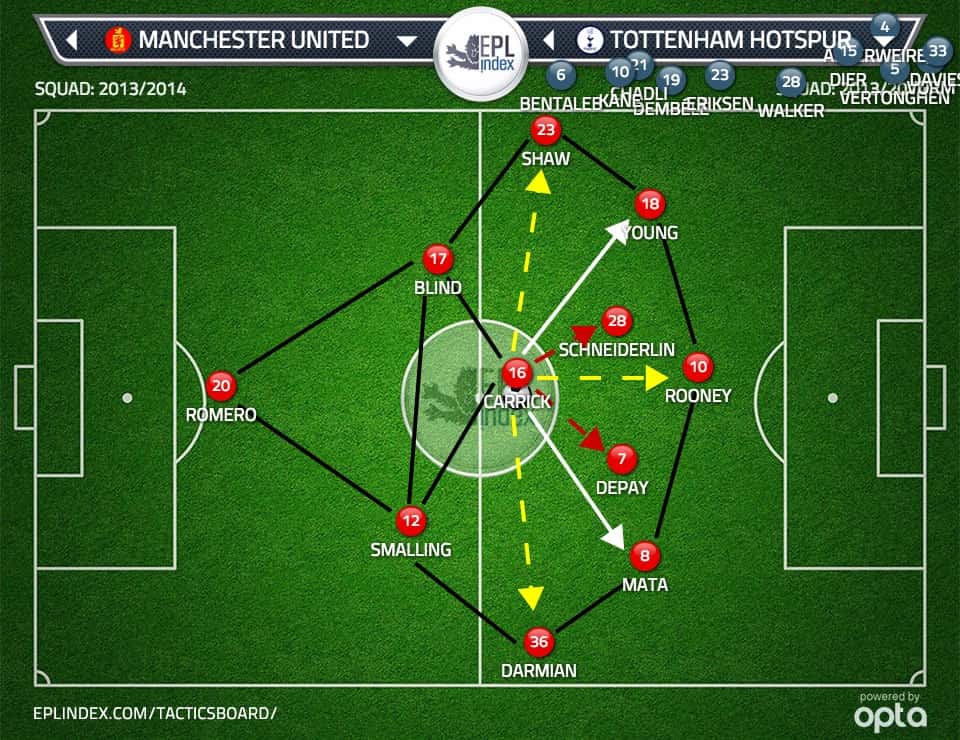
Finishing Phase - Evidentially obvious in the title of the phase, however finishing percentages are used frequently and are discussed with the 'attacking unit' before the game, what this means is that Rooney, Mata, etc. will know the weakest areas of the goalkeeper and as such they become the target areas for the striker.
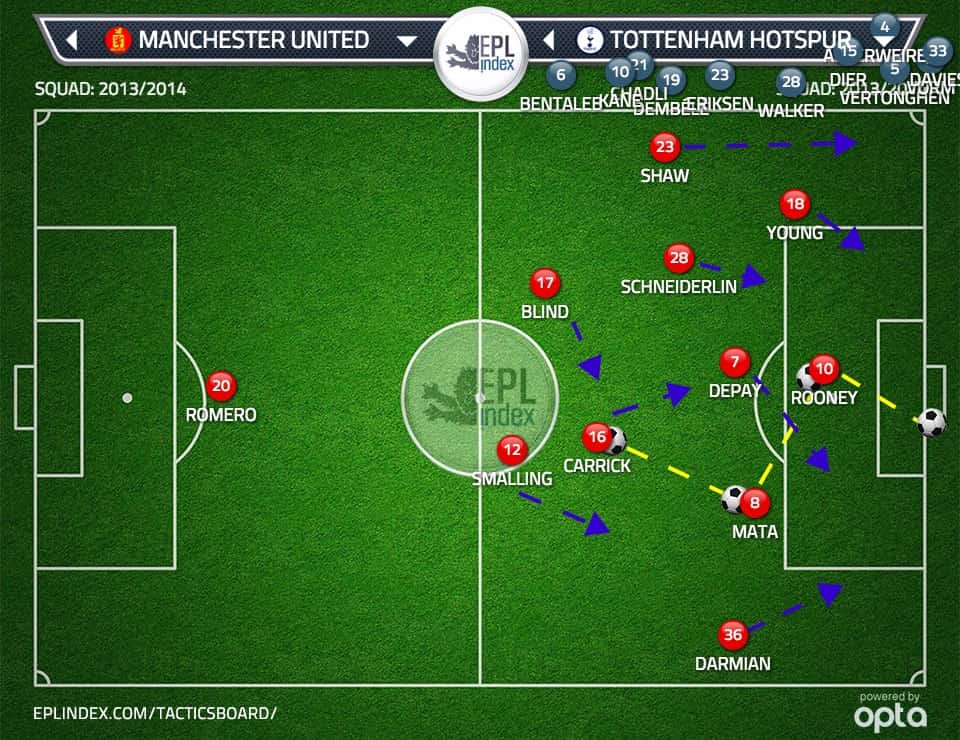
Half spaces, or half zones, inside channels, etc. whatever you wish to call them are zones of the field which offer the best possible chances of penetration and success, usually the central zone of a pitch will be heavily congested with players and the wider areas are often referred to by Guardiola among others as "the perfect defender" due to it's poor chance creation and conversation rate. Therefore the best opportunities for penetration and creation is via the inside zones - If you were to split the field into 8 horizontal sections, the 2nd sections on both the left and right would be regarded as the inside zones.
These types of spaces are heavily utilized by the likes of Barcelona, Arsenal, Liverpool & Bayern - while player such as Silva, Iniesta, Messi, Ronaldo & Hazard have all enjoyed some of their better seasons operating in these roles. The teams that use them are teams with high conversion rates or at the very least high chance creation rates and as such have become a well-known and very important part of the modern game. A lot of sides now opting for modified 4-3-3 (4-2-3-1) using the widest players on the advanced 4 as half zone players, meaning that all of their play comes from these zones specifically.
Manchester United currently uses a variation of the system. Juan Mata is used solely in the half spaces instead of through the middle which justifies his existence in the 'wing' role while Ashley Young plays predominantly as a touch line winger however when he is delivering his final ball or a pass he will look for that inside zone in order to maximise his chances of goal creation.
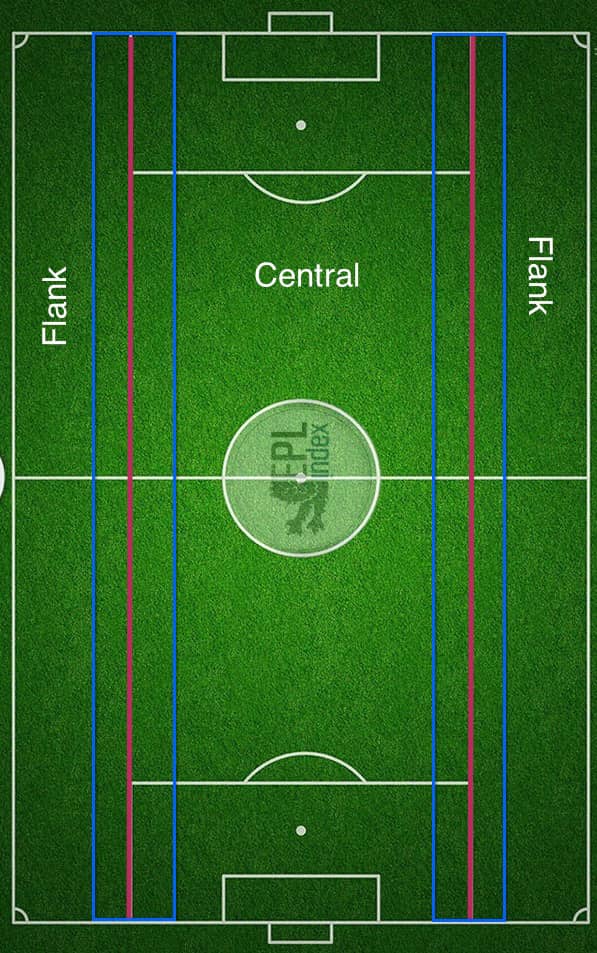
For a forward, these half zones provide the biggest spaces, with the highest possibility of success in the best angles possible. For a creative player these half zones provide a 360-degree canvas of angles in which to maximise their creative and passing ability.
"It's between the lines, in a window it's always between the lines. Because of that this system it's difficult to beat and when you have individually quality." - Louis Van Gaal.
As can be seen throughout the game against Tottenham on the opening weekend, the team are designed to play through these half spaces in all 4 phases of the game.
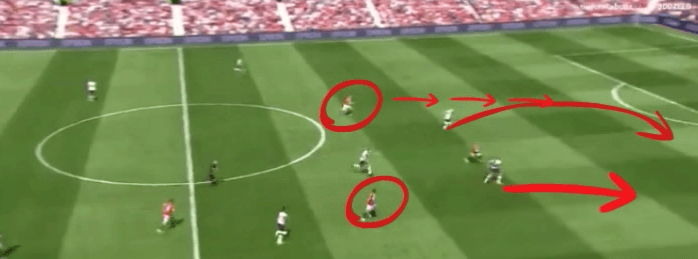
This image shows the opening goal. Depay starts off in a half zone before eventually passing to Young who moves into a half zone, in the process taking the defenders with him and leaving Rooney open in the box.
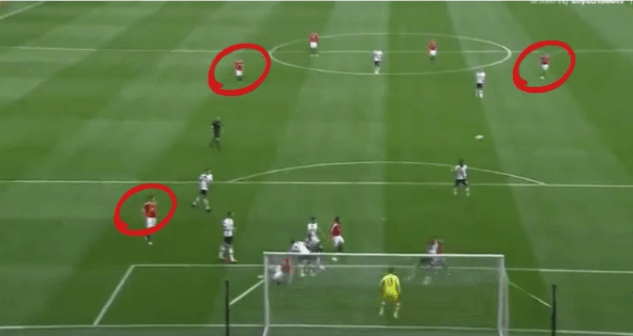
Although the current play in the game is a corner kick, 3 players are standing in half zone positions, the two deeper players opting for a narrow and compact defensive unit (notice 3 players back), whereas the one offensive player is unmarked.
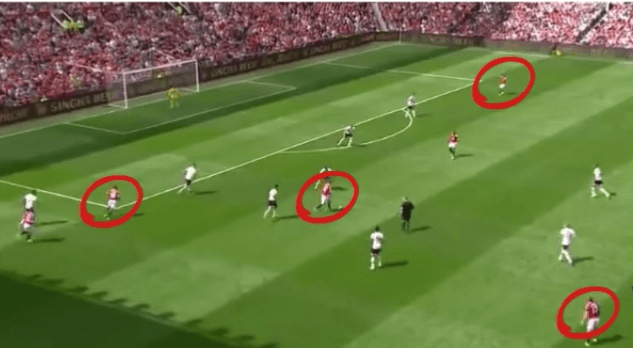
This picture shows 3 players currently in half zone positions whereas the ball carrier has just come from a slightly inside half zone position.
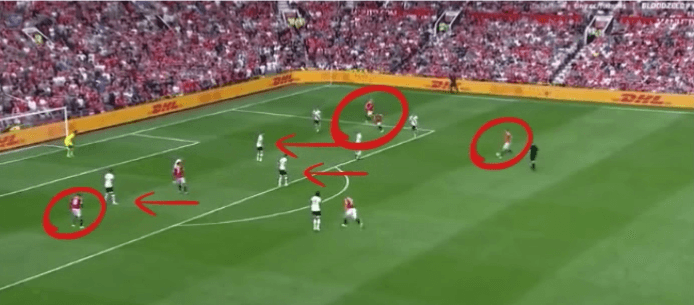
This image shows 4 manchester United players waiting in half zones and none of them are marked while a further 3 defensive players are in static positions unable to pick up a Manchester United player without disrupting the shape.
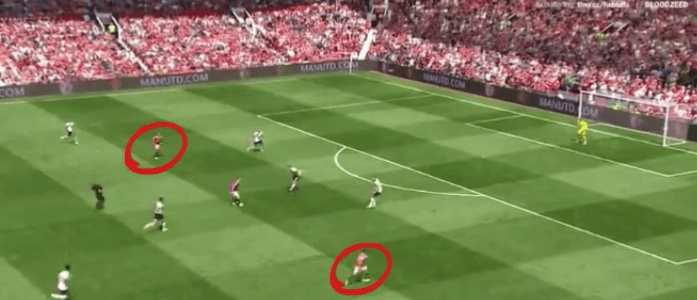
This final image is of two players in half zones, with the potential for the fullbacks to overlap on the outside and create a 5 or 6 man attack along with the central player.
Also a Dutch legend, and somewhat a rival of Louis Van Gaal does not follow the same belief as Van Gaal stating the following about the half zone system.
"In my view, you should never build-up play with your full-backs. You should only use the back during the actual attack phase. Cause when you pass the ball to a full back on your own half, the other side of the pitch is unreachable, and disappears. The problem begins by passing the ball to the fullbacks. You only have quarter of the pitch left. That's all the full-back has and once the opponent starts putting pressure, he has no option but to play it back to the goalie"
In contrast, Van Gaal believes that everything should start from the goalkeeper, therefore setting up an only forward situation, an interesting viewpoint, which is sure to cause debate. Nonetheless Louis Van Gaal is the Manchester United manager and his system is the one Manchester United will move forward with.
The 1-up-1-down system is something Van Gaal has used throughout his career, usually involving the most advanced midfielder and the sole striker, or the closest wide attacking and the striker. During his time playing 4-4-2 at Bayern and the 3-5-2 experiments with the Dutch national team and Manchester United the idea was, for example within the Dutch squad, for Van Persie to at times drop deep to receive the ball while Robben would make a reverse run to push up behind and exploit the pace.
The example below uses Mata & Welbeck from the 2014 pre-season tour.
Stage 1; Welbeck (circled in blue) drops deep while Mata (circled in yellow) pushes forward in response to Welbeck's deep run.
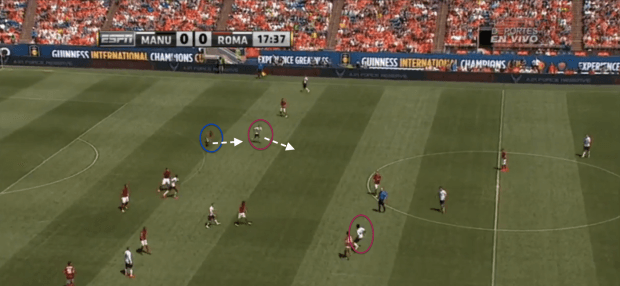
Stage 2; Due to these movements, two players (the player originally marking Mata and the central defender originally on Welbeck) were drawn to welbeck's run and the ball immediately.
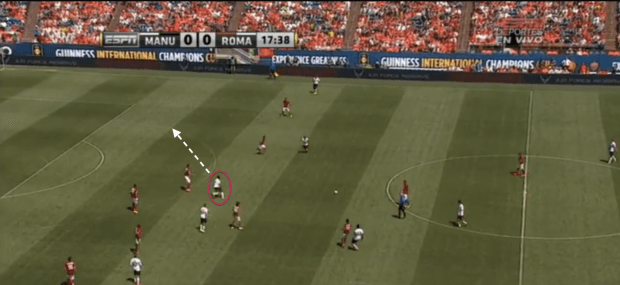
Stage 3; A wide gap, due to Welbeck's run pulling the defenders has opened up behind for Mata to run into and exploit.
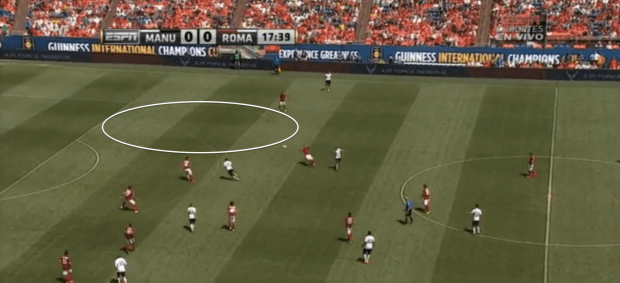
These images provide just example of how easily positional runs can disrupt a teams shape, especially a team of high quality such as Roma.
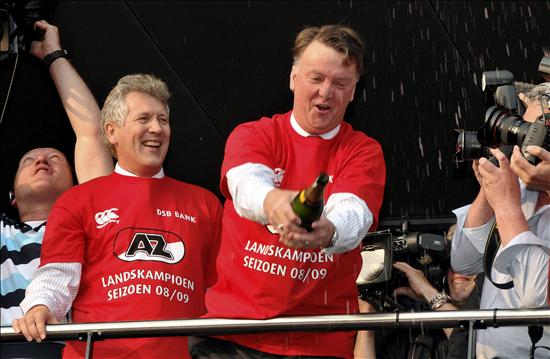
Van Gaal has always been a manager who wishes to produce for the fans, although since his management days at AZ he has also developed his system to deliver a slightly more cautious approach - this is shown in his Holland WC team and with the current Manchester United team. In the Premier League it is obvious how much the opposition can hurt you if you needlessly give away possession of the football and that has led to Van Gaal's caution based tactics to be insisted on further.
Above all though, Van Gaal aims to be a positive manager, apparent in this statement from the Dutchman "You decide how the opponent play their football and not that the opponent decides where we have to play" he says "I have always played very offensively as a trainer with my teams because I like that. You have to deliver a product for the public"
As we've already established, Van Gaal likes possession, his fondness of it orbits around the idea of space exploitation. In training Van Gaal devotes the majority of his time towards positional play as per his belief that his players must always be moving and looking for find space and form triangles (and angles) in order to support the ideology of possession based play.
When discussing the 'shape' or formation of a team Van Gaal was inclined to prefer the 4-3-3 (or variations of; IE 4-2-3-1) as opposed to the 4-4-2 due to the amount of passing lanes, triangles and angles it can open up - An essential part of his overloading the midfield strategy.
"Mathematically, the more triangles you have in your system then it's easier, because the players without thinking they are, are already in position" - A quote that rings true his statement of "...training the players brains not their legs..."
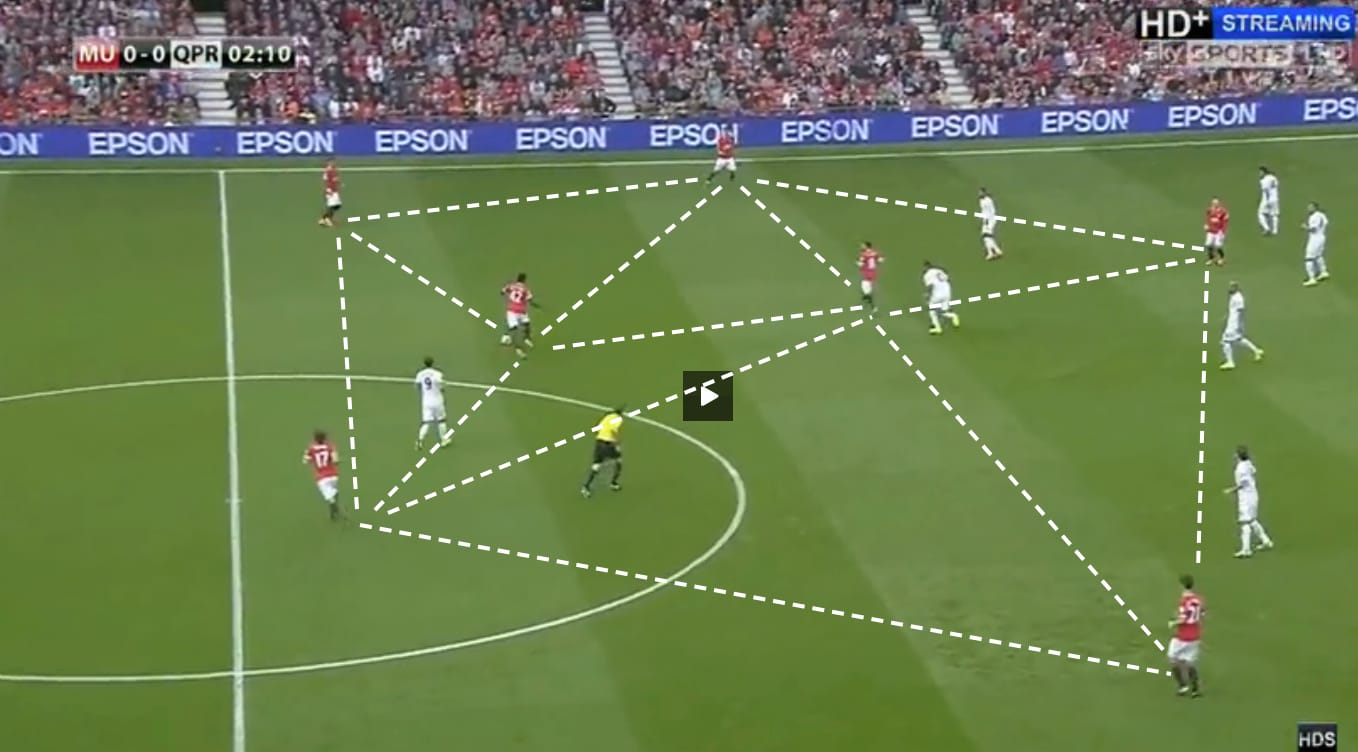
Referring to the construction phase of the offensive transition we discussed how each attack starts with the goalkeeper. In the Van Gaal system the goalkeeper is an outfield player and a playmaker (he has constantly referred to formations as 1-4-3-3 or 1-4-4-2, etc.). However his goalkeeper doesn't need to have exceptional long ball distribution skills (although it is a handy attribute especially when alternating to the Fellaini plan).
When his teams are being pressed heavily up the pitch a midfielder will drop into the defence in order to allow the fullbacks full vertical movement into the midfield or a defender will move into the midfield resulting in a team shape resembling a 1-3-4-2-1 or a 1-3-1-3-3. The reason for this shape is to generate a numerical superiority against opponents as almost all teams press with 1 or 2 players. On the subject Van Gaal said, "...Always, I want to create one man more... so, always one of the four (defenders) has to enter in the midfield - doesn't matter which - but once they enter the other three have to stay close".
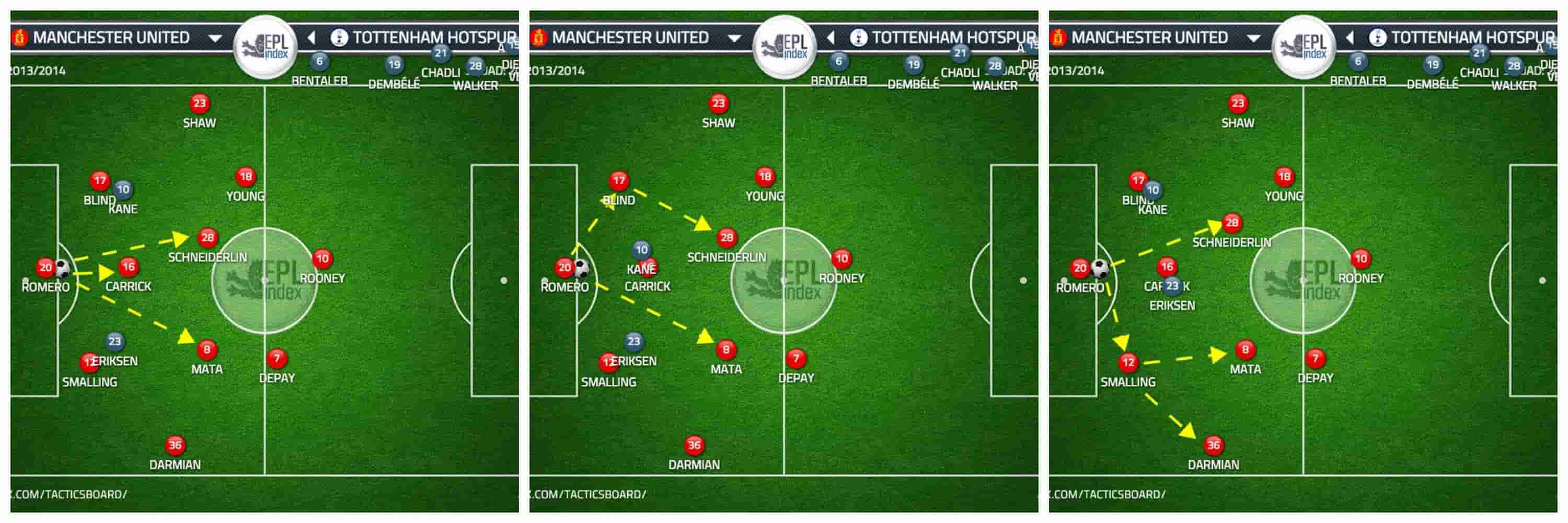
1-3-4-2-1 Formation
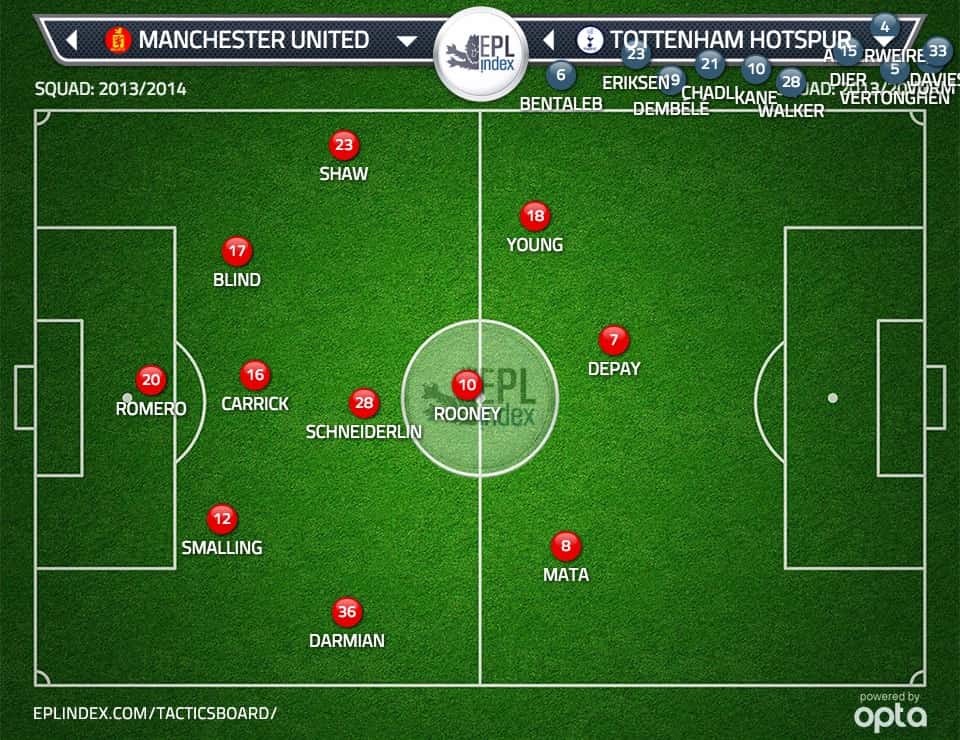
1-3-1-3-3 Formation (applying the same passing principles from the 1-3-4-2-1 image above
The current trend in modern football is high pressing, one of the biggest threats to high pressing is playing out from the back and the other is the defensive team who sits back. This is for two reasons a high pressing team will leave space in behind and as such with one pass take 2 or 3 players out of the play while the team that sits deep will allow a Louis Van Gaal side to completely dominate possession.
One of Van Gaal's biggest fans is former Tottenham and Chelsea manager Andre Villas Boas who explains the 'build up play' used by Van Gaal; "Louis Van Gaal's idea is one of continuous circulation, one side to the other, until the moment that, when you change direction, and space opens up inside and you go through it. So, he provokes the opponent with horizontal circulation of the ball, until the moment that the opponent will start to pressure out of despair. What I believe in is to challenge the rival by driving the ball into him. At this time of ultra-low defensive block teams, you will have to learn how to provoke them with the ball. It's the ball they want, so you have to defy them using the ball as a carrot."
Ultra-low defensive block teams - Deep defending teams.
Quite interestingly AVB emphasised the idea of using entire football field in order to draw opponents out of their system. When a team is defending within an allocated area (IE the final 20 yards) they are surrendering 80% of the field and although that space wouldn't be threatening it does offer the chance for 'the carrot' to come into play. Without the ball it is instinctive for a player to try and regain it instantly, therefore by keeping the ball and moving it around you're inviting your opponent to press the ball. If the opponent's pressing isn't well organised and systematically methodical then spaces will be created within that allocated defensive area (in this case 20 yards) allowing the attacking team to move into these areas and subsequently break down the opponents.
Further enhancing the Villas Boas statement he goes on to add, "The second phase is to replace the ball, so you can see the disorganisation of the opponent, and then you need creativity to give the pass - to see that moment". A Van Gaal team will tend to play a lot of lateral passes, and that is something that has stuck throughout his entire career. His touchline to touch line-passing style (or half space to half space style) is not simply used to keep possession, as Villas Boas has said it is to draw the opponents out of their defensive shape therefore creating space in behind.
On the subject of lateral passing Van Gaal had this to say; "When we have the ball the midfielders have to open - always at the sides - it's very important because, because of that the opponents have to defend wide and then we have more space".
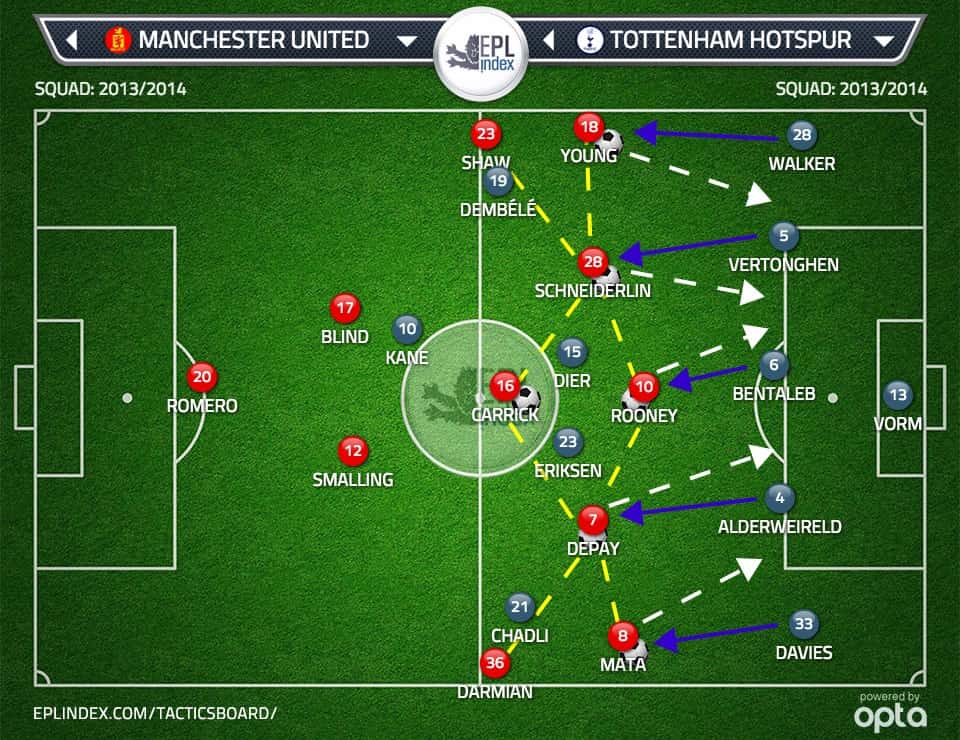
In the above image you're able to see the passing lanes that would pull an opponent out of position and which runners could exploit it.
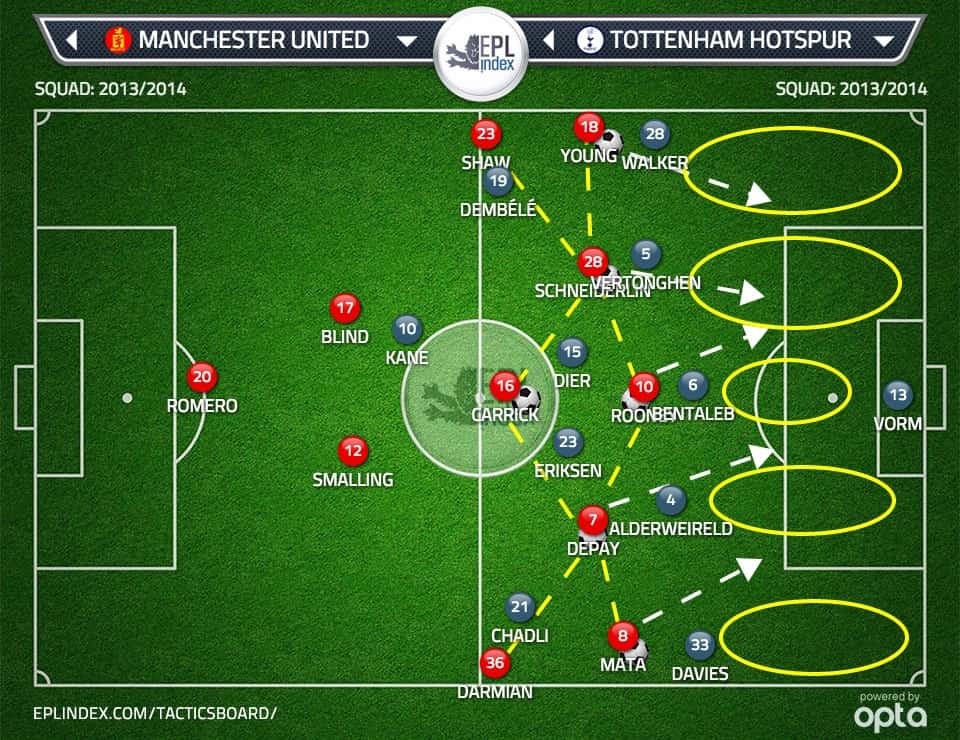
In the above image you're able to see the space that is left behind once the player has been pulled out of position.
Biesla summed up the 'backwards passing' notion perfectly well from a tactical point of view. The Argentine boss had this to say "The foreign model that pleases me most is that of Louis van Gaal Ajax, that is to say a flexible team to compose his lines based on the adversary requirements at the time of ball recovery. Me, what interests me is that the team has a clean and independent game project on offensive phases. I calculated, 37 passes backwards. The supporter sees this as a refusal to play, but undoubtedly as this happens backwards, this is the beginning of a new attack."
The Dutchman believes the most important part of his philosophy is the ability to move from defence to attack or attack to defence depending on the play in motion, "I think the transition is the most important aspect, because in transition phase the opponent is not organised, so that is the moment that you have to benefit" is what the United manager had to say about it.
Transitioning the ball is a very crucial step in the modern game of football especially against sides who are well organised, in the past when you win possession your immediate response is to try and score a goal as fast as you can and as such playing risky passes which have a very small chance of succeeding. For a lot of teams, they are beginning to understand the Van Gaal method, which is to keep the ball, be patient and only pick correct passes.
"I think that when the opponent is disorganised and we gain the ball, then we have to take benefit of that disorganisation... but when you pass wrongly and you lose the ball... then I say... no, no, no...be patient, because you see, when you lose the ball then you have to gain the ball again and again... and that costs us a lot of energy" - Louis Van Gaal
The Van Gaal method focuses a lot on team unity and completing individual responsibilities to form a bigger team fixated image. "Always together. When they are here they have to have contact. So when they go down, the whole team have to go down...but not with space between the lines because the opponent want to take benefit of that" is the Van Gaal response when questioned about this.
To those who remember the early Van Gaal method you'll remember his high pressing teams at Ajax and Barcelona, for those who watched his spell with AZ Alkmaar and after that the Holland national team you'll know the cautious system where pressure was only applied once the opposition entered the teams half. At United we're experiencing a hybrid of the two systems, the likes of Rooney & Young provide the work rate for a high pressing game while the cautious approach is now natural for Van Gaal.
Regardless of the pressing system, defensively Van Gaal regards the defence to have an equal or greater importance to the offensive stages of the game, his views on attacking and defending are also very interesting and would go even further to explain United's no risk style of football saying "When you are in attack you have to think about defence. When you attack you take always risk because have a big space behind you, because of that you need defensively thinking when you attack".
Van Gaal is the coach who inspired the modern generation; Mourinho, Guardiola, Klopp, De Boer, Koeman & Simeone have all gone on record to express how much they have learned from the experienced Van Gaal.
An astute tactician with an obsession for every little detail of a football game, details that many managers will always miss no matter how many times they see the plays. Constantly with a notebook in hand, Van Gaal is known for jotting down every single mistake and weakness that appear throughout the game and effect the current strategy.
Xavi summed the Dutchman up perfectly "Van Gaal is a tactician par excellence, he knows exactly what he does every game".
As a manager Van Gaal spends the majority of his time on the training field making his presence felt through tactical and positional drills and walk through. Away from the training field Van Gaal goes one step further than the video analysis and instead conducts further analysis with his team in order to be always one step ahead of the opponents, predicting the likely playing style teams will adapt too when playing against him and accounting for all circumstances.
Ronald De Boer had this to say about the obsessive nature of Van Gaal "He is so well prepared that you would be doing drills in training and you would know what the opposition were going to do before they did. You knew exactly what you were up against. He would say sometimes to Marc Overmars, "The guy you are playing against drifts across to be close to the central defender. Stay where you are and you will get in behind him," - and he'd be right".
I'll end this with this thought; Van Gaal has stuck with the likes of Jones, Smalling, Valencia, etc. instead of easily replacing them, why? Well when the question was put to Van Gaal this was his reply "I'm not the kind of coach who just goes out and buys players for the sake of it. I'm a coach who wants to - and can - improve players."
For Van Gaal, he does not need a Ramos, an Otamendi or a Bale, as he believes he can turn Jones, Blind and Smalling into those players.
Apart from Young that is, he'll never be a Neymar.
Written by Jordan Lombard August 11 2015 23:47:08

